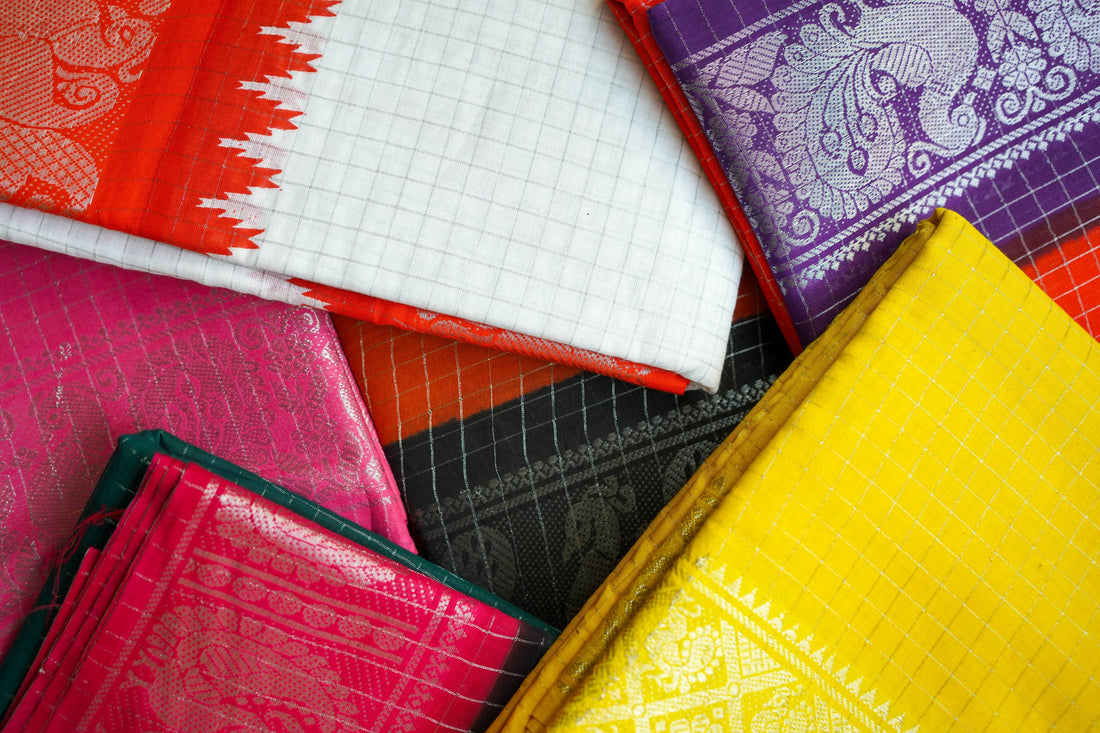
Sungudi saree history
Share
Sungudi sarees are traditional handloom sarees originating from Madurai, a city in Tamil Nadu, India. These sarees are known for their unique tie-dye (Bandhani) technique and are often made using cotton fabric. The history of Sungudi sarees is rich and tied to the cultural heritage of Tamil Nadu.
History of Sungudi Sarees:
-
Ancient Origins: The art of tie-dye or resist-dyeing, used in making Sungudi sarees, is believed to have been practiced for centuries in India. While the technique itself was introduced by the Mughal dynasty, it was perfected in Southern India, particularly in Madurai.
-
Development in Madurai: Sungudi sarees have been traditionally woven in the town of Sungudi, located near Madurai, where skilled artisans have practiced this form of textile art for generations. The name "Sungudi" comes from the town where this craft originated. The sarees became well-known for their intricate dyeing process, which creates vibrant patterns on the fabric.
-
Tie-Dye Technique: The tie-dye method used in Sungudi sarees involves tying small portions of the fabric tightly with thread before dyeing it. This technique prevents the dye from coloring the tied areas, resulting in beautiful patterns, often resembling polka dots or other intricate designs. The dyeing is done using natural dyes, which gives the saree a unique, organic look.
-
Cultural Significance: Sungudi sarees became a symbol of Tamil Nadu’s rich cultural heritage, especially in the Madurai region. The sarees are often worn by women during traditional festivals, religious occasions, and weddings. They represent the region's craftsmanship and continue to be highly valued for their aesthetic and cultural significance.
-
Modern-Day Sungudi Sarees: Today, Sungudi sarees are still highly popular, especially for their comfort and traditional appeal. Over time, the designs have evolved, with contemporary adaptations such as bold patterns, modern colors, and even the use of silk blends. However, the traditional cotton Sungudi saree remains timeless and is cherished for its comfort and elegance.
-
Recognition and Preservation: The Sungudi saree is now considered a cultural treasure, and efforts are being made to preserve and promote this art form. There are workshops and initiatives in Tamil Nadu to teach new generations the intricacies of tie-dyeing and weaving, ensuring the continued production of this traditional fabric.
In conclusion, Sungudi sarees are not just garments; they represent centuries of artistry, culture, and craftsmanship from Tamil Nadu. They embody the essence of traditional Indian textiles, showcasing the beauty and significance of handwoven, hand-dyed fabrics.